11 Essential Accessories to Buy with Your New Surfboard
When buying a new surfboard, there are still a few more things that you will need before you can take it out in the water.
As such, I’ve compiled a list of practical accessories to buy with your new board. Unlike many similar lists online, here I stick to the most essential surf accessories, rather than the ones that are expensive and the latest trend or fad.
So, below are the most essential accessories to buy with your new surfboard!
Now, as there are still a few points to explain, let’s take a deeper look at each of these in the points below.
Time to dive in!
Wax for Grip
Surfboards need wax because, without it, they are like trying to walk on ice. As soon as a drop of water hits the surface of the board it becomes as slippery as you can imagine.
Waxing your surfboard before hitting the waves is essential and therefore definitely get yourself some wax.
You might find that, if buying your surfboard from a local surf store, they might throw some wax in for you, as might some online surf websites.
Choosing the Right Surfboard Wax
To get the right wax, look at the temperature it is recommended for. Most surfboard wax products list the temperature as a range as well as a category guide like cool, warm, etc. To make sure you get the right one for you, check the water temperature for where you’ll be doing your surfing.
If you will be surfing locally or staying in the same place for one time, you can also check out the seasonal water temperatures for the area you will be surfing in.
Don’t worry too much if the water temperature is in-between two different types of wax – just go for the colder one of the two as it will last a bit longer.
You might also like to choose some of the more environmentally friendly wax that is available. I say this because wax is made up of a lot of chemicals so anything that you can do to cut down on that can be helpful for the environment.
Brands like Matunas sell ‘organic’ surf wax, which I’ve used and can say that it is just as good as any out there.
Do All Surfboards Need Wax?
There are a few specific surfboards which do not need wax, but these are extremely rare. For instance, the Rock-it surfboards range say that they have a textured surface that doesn’t need wax, but again, that is still not common.
You might also see surfboards that come with some kind of hex-grip pattern, but that again would be uncommon.
Fins that Fit your Board
To go with your board, you will need some fins! Fins help to guide the board and stop it from spinning out of control wildly.
In fact, you can see the clip below of retired pro surfer, Kalani Robb, riding a tiny board without fins just to do spins on – definitely fun, but not helpful for learning!
To get the right type of fins, check which kind of fins your board works with. For a quick breakdown, here are the main types of surfboard fin systems:
- FCS: come in standard and the newer FCS II
- Futures: a very strong fin system
- Softboards usually come with their own fins and are normally included with a board
So, if the board you are buying has FCS fin system, then you’ll want to get some of their fins, the same goes for Futures.
There are other, cheaper, brands that state that their fins are ‘compatible’ with either FCS or Futures, so read the small print carefully before buying.
In terms of choosing fins, make sure you get the right type to suit your board. Again, as a very quick rundown, the main types of fin combinations are as follows:
- Twin: 2 fins
- Thruster: 3 fins, in a triangle
- Quad: 4 fins
- 5 fins: to switch between thruster and quad set ups OR can be set up as a quad plus trailer
The most common fin set up is a thruster, but I’d recommend getting a 5 fin set if you have FCS of Futures fins as you can then experiment later on with both a thruster and a quad set up. It’s also cheaper to buy a set of fins as a 5-pack than both quad and thruster sets separately.
One last point is that, with FCS fins, note that the older FCS fin systems might not be compatible with the newer FCS II fins, so be sure to read the small print on this when buying.
Fin Key
As well as fins, be sure to get a fin key for your surfboard that suits your fins.
If you bought separate fins, you should get one of these with your fins but otherwise, you’ll need a fin key.
The main two fin systems are FCS and Futures fins. The main difference between them is that FCS have 2 tabs on the base while Futures fins have a solid base; fin keys for each brand are interchangeable so that doesn’t matter.
If you don’t have a surf store nearby, you can simply use a hexkey since surfboard fin keys are just hexkeys designed to be easy to use.
You can get a 3/32 hexkey or Allen key to use with your fins as they will work just fine – in fact, these keys from a hardware store often last longer than the ones by surf brands and are usually made from strong metal, so they are a good option for long term use.
The only point to note here is that the new FCS fins, FCS 2 don’t always need a fin key since they can be taken out and put in by hand alone. Be sure to check which you have if your board has FCS fins.
FCS 2 fins have 2 tabs but these are longer than on the standard, classic FCS fin designs, something you will see immediately.
Leash that is a Similar Length to Your Board
For safety and to avoid losing your board, a leash is an absolute essential for surfing.
A leash, also called a ‘leg rope’, is a Velcro strap around your ankle that then connects you to your board.
When you fall off, as will happen often regardless of what level you are, your surfboard will get carried away from you by the force of the wave.
This is not only dangerous for you in that it leaves you stranded in the sea without a board to float on, but also dangerous for other people near you as your board can easily hit and injure them.
To get the right leash, look at the length of your board. My recommended length for a surfboard leash is to go for a leash that is as long as the board is tall, so get a 6’0 leash for a 6’0 board. If your board is in the middle 6’6, then round up and get a 7 foot leash, etc.
For softboards and mellow waves, the cheaper leashes will be just fine, although if you are planning to surf somewhere with more powerful waves, then go for the more expensive but safer well-known brands like FCS, Da Kine, and so on.
Traction Pad for Extra Grip on PU/Epoxy Boards
A traction pad is a great thing to have as it provides a soft foam grip to your board, usually on the deck above the fins.
These are like a grippy foam sticker with raised bumps and beads that provide traction. If you follow the instructions properly, you will only need to put one of these on your board! I say this because I put one on without following the instructions when I was younger and, surprise surprise, it fell off and I had to buy a new one and start the whole process again, wasting time and money.
So, to avoid the hassles, the key tips to putting your traction pad on are to :
- Make sure your board is extremely clean (even if it is brand new) using white spirit, or similar, to wipe it down.
- Then leave it to dry for at least 24 hours before going in the water. This will allow the adhesive/glue on the traction pad to stick to the board properly.
Most of the same brands that make leashes also make traction pads, so you can usually see the quality products when looking for these items.
You can buy a front traction pad for your board, but most surfers prefer to have just the one traction pad at the rear. As such, I’d suggest just getting a standard traction pad and using wax for the rest of your board.
Wet-Dry Bag for Carrying Your Wetsuit Without Mess
A good bag for carrying a wetsuit, or just wet boardshorts, needs to have some kind of waterproofing. This is because normal backpacks can get stained from the saltwater very quickly, leaving you with grayish-white patches on your bag, as well as a soggy bag that you can’t use for much else until it’s dry!
A wet-dry bag is the perfect solution as the surfing versions are designed for carrying wetsuits and come fully equipped with everything that you will need.
My main tip for choosing a wet-dry bag for your surfing wetsuit is to look at one that has a lot of padding on the straps. I have bought cheaper versions in the past that had terrible straps that felt like they were cutting through my shoulders when the bag was full, which was not a nice experience!
As an added bonus, look for a wet-dry bag that comes with a changing mat since some of the do and these are really handy, but not usually something you will want to buy on their own.
‘Day Bag’ to Carry, Protect and Store Your Board
A ‘day bag’ for your surfboard is really helpful because it makes it easier to transport your board to the beach while also protecting it while you store the board at home.
The name ‘day bag’ comes from the fact that it has lighter padding than the more heavy duty travel board bags you can buy for going on airplanes and long-haul trips.
The lighter padding also makes these day bags less bulky, so they take up that little bit less space in your house.
A day bag is great for storing your board in because they usually have a reflective cover on the inside which helps to keep them cool when the sun shines on them (although you should avoid storing your board in direct sunlight wherever possible).
As well as being great for storing your board, surfboard day bags are great for putting your board in the car and getting to the beach.
This helps to keep the wax off the car seats and also stops your board from getting damaged while transporting it to or from the beach.
A day bag should have a good shoulder strap or carry handle to make it comfortable to use often. These can also double up as a changing mat when you are at the beach, so day bags have a good few uses!
Getting the Right Day Bag
When choosing a day bag, as well as going for a well known brand, check that the shape of the bag is right for your board.
Some of the key surfboard shapes are:
- Funboard
- Fish
- Shortboard/thruster
- Mini mal
- Longboard
So, when looking at a day bag, be sure to get one that suits the outline or template of your board because length alone is not enough, especially if you have a very wide and thick board.
Wax Comb and Scraper for Cleaning and Water Temperature Changes
After you put wax on your surfboard, it can quickly lose its grip if you don’t reapply it or ‘rough’ it up a little.
For this reason, I really like wax combs as they let you put a bit more grip into the wax already on your board. I use my wax comb before almost every surf as it is a better alternative to using up precious wax. You will need to reapply more wax at some point, but a wax comb helps your wax go further and is a light and handy addition to your surfing toolkit.
The far side of your wax comb will also function as a wax scraper. This is handy when it comes time to put on a new coat of wax with the changing water temperature through the seasons or just when the wax is old and very dark, losing a bit of its grip.
Most of the main surf wax brands will sell one of these, so have a look at what is on offer and get one to go with it. They are usually pretty cheap making them a very helpful extra to have.
One last point is that you might find that you can get a wax comb/scraper with a fin key built into it. If so, then no need to buy this as well!
Strong Waterproof Sunscreen to Avoid Burn (Or Worse!)
Surfing can lead to high amounts of sun exposure not only because you are outdoors but also because the reflection from the sea causes your face and other exposed parts to catch the sun very quickly.
To save you burning, or just prevent the long-term negative effects of this intense sun exposure, you will need to get some strong waterproof sunscreen.
The sad reality is that many surfers do not protect their skin from the sun and can end up looking much older than they are and with skin that is aged beyond its years. Prolonged exposure to the sun can also increase the chances of getting skin cancer, so putting on some cream, even on more overcast days, is highly recommended.
As with almost everything on this list, surf brands make these and offer some very good products.
I have found that zinc-based products work well as they offer total block, giving you maximum protection while also maintaining their color so that you know which parts of you are protected.
Again, there are some organic versions out there if that suits you. When I lived in Bali, Indonesia, I actually used a local product that was made of all-natural ingredients and it certainly worked, so if that appeals to you, then why not give it a try.
Surf Kit Accessory Wallet
This is a pack of some of the accessories that have been mentioned above in one handy wallet.
For example, Open Road Goods on Amazon sell these filled with waterproof sunscreen, wax scraper, and wax in them.
They’re a nice way to bundle all of the items together and keep them in a clean and tidy way that is easy to access.
Just to be clear, this would be bought as a pack, so you therefore wouldn’t need some of the items listed above that are contained in it.
Soft Roof Racks for Carrying Your Board on Your Car
Gone are the days when you had to fit hard metal roof bars onto your car to transport surfboards.
These days, we are lucky to have soft roof racks that mean you can carry your surfboard on the roof of almost any car with just a padded straps that come in a bag.
As it is hard to fit many surfboards inside a car, carrying them on the roof is the best option for most since it means your board won’t get in the way while you drive to the beach.
The soft roof racks are quick and easy to put on and take off, meaning that you could even use them on someone else’s car. As well as that, you don’t have to leave them on your car all the time, so they give you a huge amount of flexibility for a relatively small price.
You can usually carry up to 3 boards with these kinds of racks, although double sets are also available which can hold up to 6 boards with the same kind of set up.
Be sure to check out my dedicated article on how to carry a surfboard on the roof of your car now for more info and tips!
Wateproof Key Holder
When you get to the beach, you will not want to leave your key on the beach when you are out surfing as thieves can spot surfers doing this a mile off.
However, most people carrying car keys these days will know that they are expensive and contain many electronic safety features, making them far from waterproof, or even splashproof.
The solution comes in the form of a waterproof key holder that you can take with you into the surf and that fits snugly under your wetsuit.
This is another item that I use all the time and is very much essential if you want to keep your keys safe from water damage and thieves!
Aquapac is the most well-known brand offering these key holders, are available on Amazon and is the key holder I use to go surfing, so it’s definitely a recommended investment and will last you many years.
The way to wear these waterproof key holders under your wetsuit is by putting it down the back of your suit. You might need a friend to help with this. Aquapacs come with a long cord and will not be in a position to tighten at any point so there’s no need to worry.
To see all the different options available, check out my post on surfing with car keys for loads more insights now!
Surf Ear Plugs
I have put ear plugs on this list as they are a very good thing to use from the very beginning. I also have a personal reason for recommending ear plugs as an essential surf accessory; I surfed for 15 years without them and am regretting it now since I have what is known as “surfer’s ear”.
The medical name for this condition is exostosis, which refers to a narrowing of the ear canals over time, caused by prolonged periods spent in the water. As I understand it, the body reacts to constant amounts of water by trying to block the water getting in, which then closes up the ear canal as bony growths start to sprout (which I apparently have!).
In fact, the hearing specialist that I’ve visited said that cold water makes this even worse, as it causes even more of a shock to your body, so your body reacts more quickly.
So, getting ear plugs when you start can prevent any kind of growth from happening, and also prevent you from feeling the negative effects of surfing for many years, especially if you plan to surf often in cold water.
In addition to natural responses, ear plugs can block out dirty water that can get into your ear and cause infections, which can happen in polluted or unclean areas.
As they say, prevention is better than cure, which is very true when it comes to ear problems from surfing so do make sure to get into the habit of wearing a good pair of surfing ear plugs.
Choosing Ear Plugs for Surfing
My advice here would be to spend more on these than you might initially think. I went through the cheapest options to start and I didn’t use them more than twice since they were so poor in quality.
I actually got mine custom made at my local hearing center, so you might also be able to do the same.
However, there are lots of good options available online, so you could definitely go down that route, too, but just make sure you get surf ear plugs specifically since swimming ear plugs will fall out in the surf after a few waves (again, another mistake I made!)
Changing Robe/Poncho
Before going further, you’ll only need one of these if you surf with a wetsuit. If you are lucky enough to be surfing in warmer weather, these probably won’t be necessary, but they still might come in handy.
When you’re at the beach, changing into and out of a wetsuit is a little tricky, and potentially embarrassing, so a changing robe or poncho comes in handy to save your blushes and make your surfing experience a lot easier.
These act as a towel and cover up your body from head to your shins. They are designed to change in so you have room for enough movement to get out of your wetsuit without having to do a tricky dance all the while!
Again, this is another item I use all the time and particularly recommend them for colder climates where they can give you an extra bit of warmth while you are getting out of your cold, wet wetsuit!
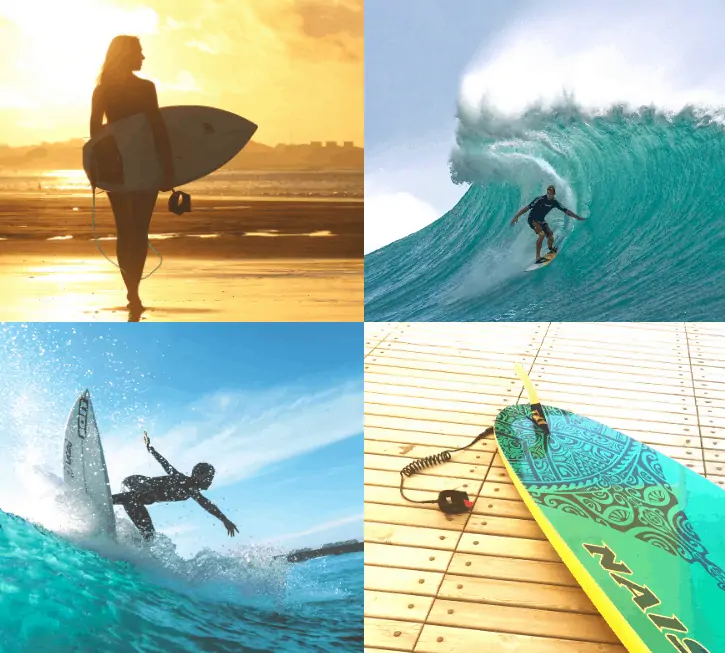

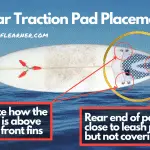
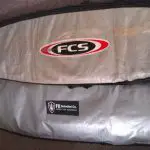
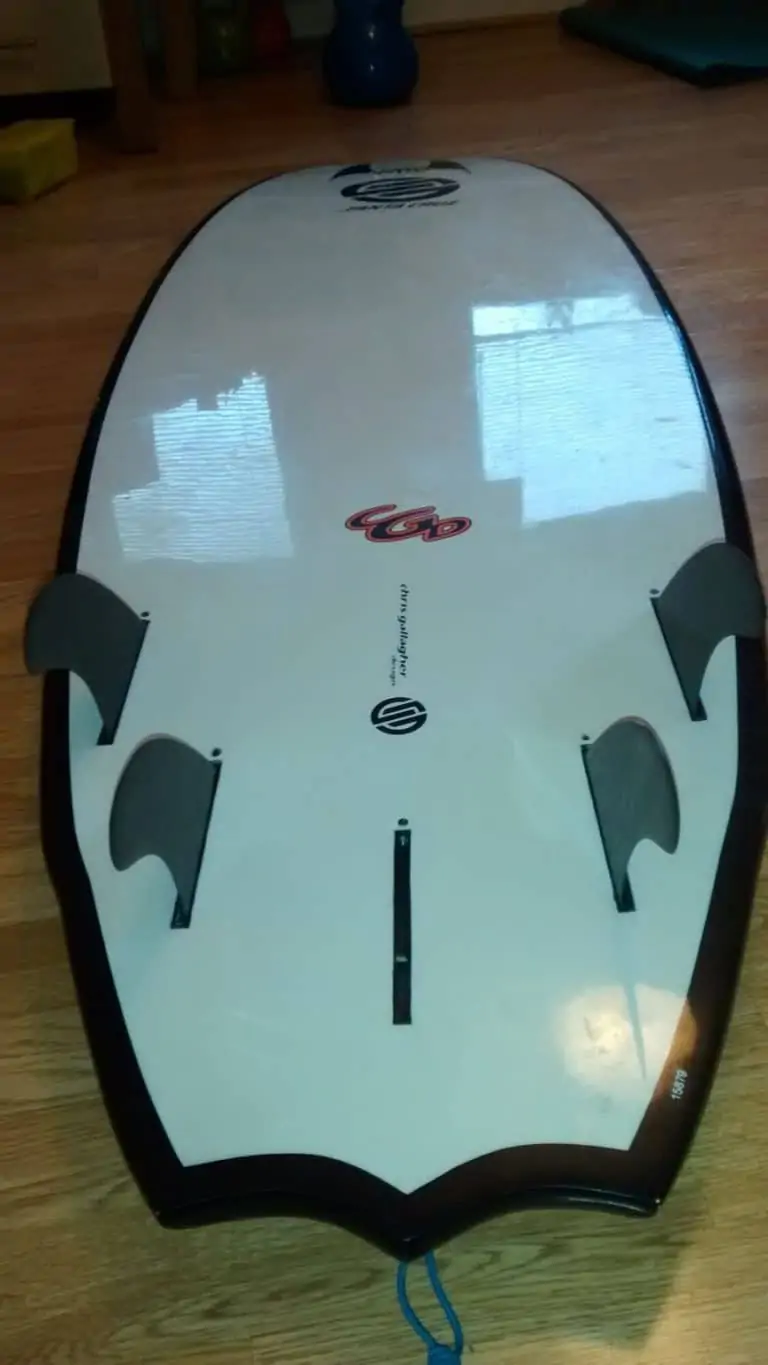
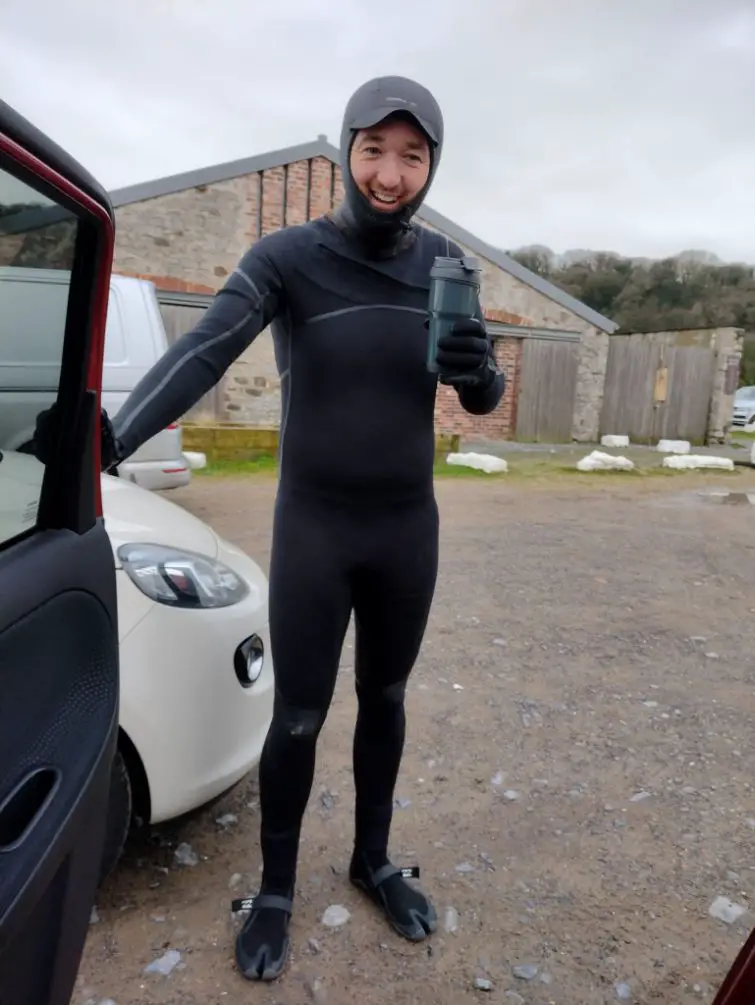
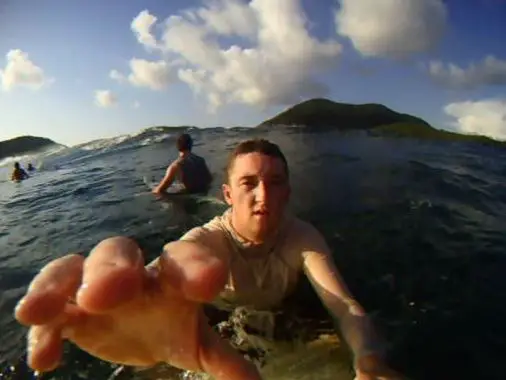
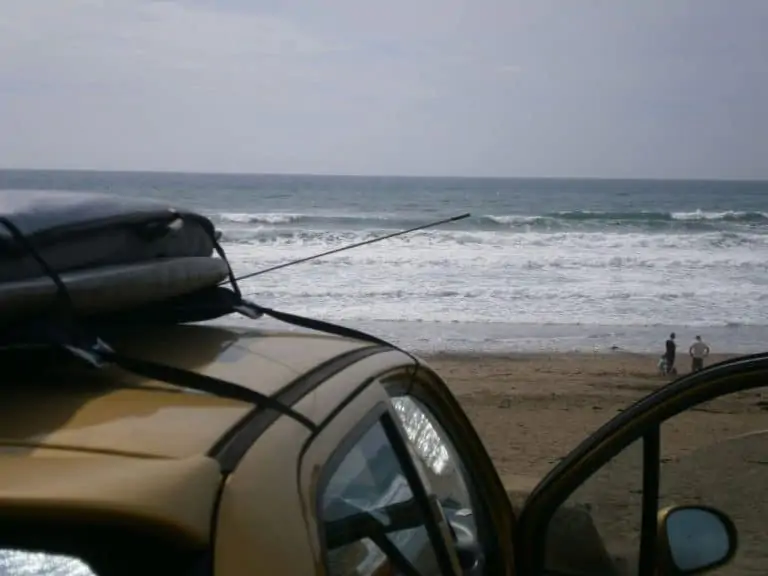
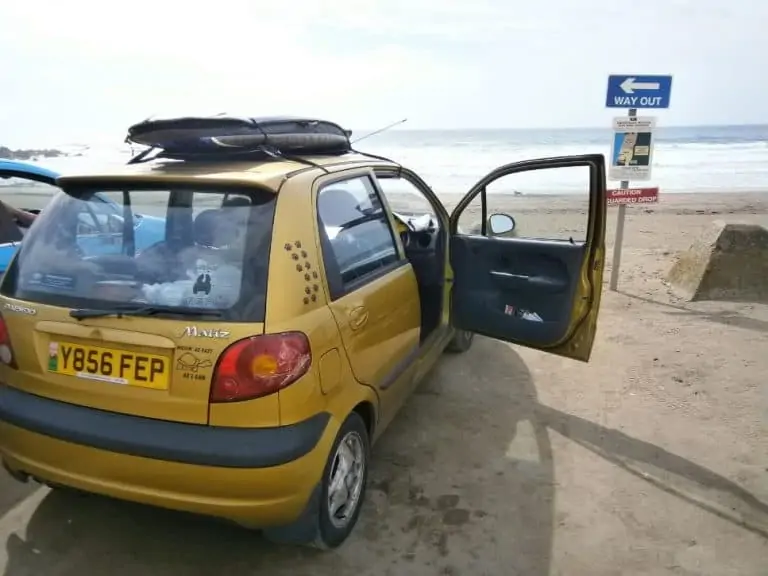

One Comment
Comments are closed.